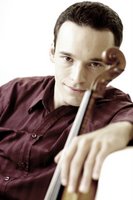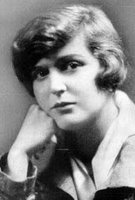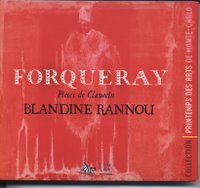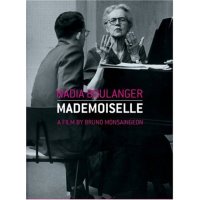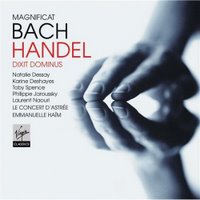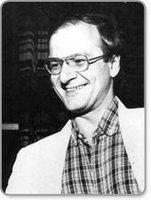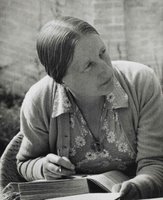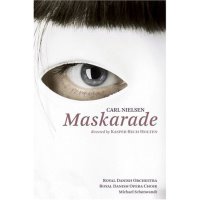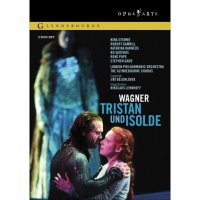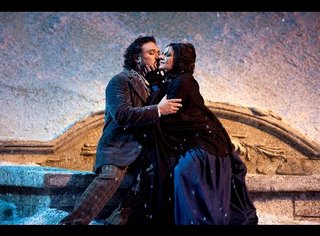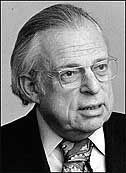« Simulcast » du Metropolitan Opera House de New York
Samedi 15 mars 2008, à 13 h 30
Distribution (en ordre d’apparition vocale) : Dean Peterson (Hobson), John Del Carlo (Swallow), Anthony Dean Griffey (Peter Grimes), Mrs. Sedley (Felicity Palmer), Patricia Racette (Ellen Orford), Jill Grove (Auntie), Greg Fedderly (Bob Boles), Anthony Michaels-Moore (Balstrode), Bernard Fitch (Rev. Horace Adams), Leah Patridge (première nièce), Erin Morley (deuxième nièce), Teddy Tahu Rhodes (Ned Keene), Logan William Erickson (William - rôle muet).
Production et mise en scène : John Doyle
Décors : Scott Pask
Costumes : Ann Hould-Ward
Éclairages : Peter Mumford
Chœurs et Orchestre du Metropolitan Opera House de New York dirigés par Donald Runnicles
***
On parlera longtemps de cette gigantesque muraille que John Doyle et Scott Pask ont édifiée en guise de décor à leur production de Peter Grimes. Elle obstrue toute la scène en ne laissant aux chanteurs que quelques mètres d’un espace assombri pour évoluer entre les portes et fenêtres d’où ils émergent de temps en temps pour commenter le drame ou s’y mêler et la fosse d’orchestre qui s’ouvre, menaçante, à quelques pas de là. La mise en scène, qui autrement passerait pour dynamique et imaginative, s’en trouve constamment entravée. C’est particulièrement le cas des nombreux moments, dont la scène finale, qui font appel aux chœurs – lesquels, au demeurant, donnent le meilleur d’eux-mêmes.
Cela dit, cet obstacle monumental n’a pas empêché que le charme opère. Le simulcast de samedi dernier est, à tous égards, une réussite, peut-être même le clou de la saison, le spectacle qui, jusqu’à maintenant, nous aura arraché le plus de larmes. Mais comment expliquer cela ? Peter Grimes n’est-il pas un de ces opéras « modernes » que le public a l’habitude de bouder ?
Voyons-y un signe des temps. Par le jeu de la technique, l’opéra effectue un retour spectaculaire en réinvestissant le champ du visuel. Alors même que l’amateur d’opéra discophile effectue la transition du CD au DVD, le simulcast survient à point nommé pour préparer une véritable révolution dans ce que le public attend du genre. Grâce au simulcast, des œuvres qui n’ont jamais été particulièrement populaires, comme Eugène Onéguine ou Macbeth, sont en train de le devenir. De façon encore plus significative, c’est le répertoire « contemporain » ou, si l’on veut, « moderne » (s’agissant, en fait, dans le cas présent, d’une œuvre plus que sexagénaire) qui a tout à y gagner. Pour être apprécié, ce répertoire, en effet, exige que le spectateur puisse voir et entendre tout ce qui se passe et se chante sur scène. Or, ces conditions, que le théâtre ne peut offrir que de façon très imparfaite, sont idéalement réunies dans le simulcast, avec non seulement les sous-titres, mais la prise de son, les gros plans et autres mouvements de la caméra, etc. À ce sujet, il était instructif de prêter l’oreille à ce que l’on entendait dire samedi dernier. Au départ, plusieurs semblaient réticents, comme ces deux dames assises derrière moi qui, semble-t-il, ne s’étaient déplacées que pour « donner une chance à Britten » et « supporter le Met », et se proposaient de quitter après le premier acte. Elles sont restées jusqu’au bout et, à la fin, elles ne tarissaient pas d’enthousiasme devant l’expérience esthétique qu’elle venaient de vivre et la musique extraordinaire qui leur avait été révélée.
Grâce aux simulcasts, l’opéra du vingtième siècle est en train de se gagner un nouveau public, un public qui n’est autre que le public traditionnel d’opéra.
Cette production de Peter Grimes consacre Anthony Dean Griffey parmi les interprètes actuels du rôle-titre. Par sa carrure physique et l’intensité de son interprétation, il rappelle un peu Vickers. Sa voix cependant est beaucoup moins distinctive, nettement plus lyrique et son approche dramatique de Grimes assez primaire, rappelant un peu la manière dont Guleghina s’est attaquée à Lady Macbeth plus tôt cette saison. D’aucuns ont cru détecter à cet égard une influence, dans la conception que Griffey se fait de son rôle, du personnage de Lenny Small, le géant bien intentionné et meurtrier malgré lui d’Of Mice and Men de John Steinbeck. Peut-être. En tout cas, on est à mille lieues du poète-métaphysicien incarné par Peter Pears et, plus récemment, Philip Langridge.
Je dois avouer que, jusqu’à maintenant, et tout en reconnaissant la beauté de sa voix, je n’avais jamais été particulièrement impressionné par les qualités dramatiques de Patricia Racette. Peut-être l’ai-je trop souvent entendue chanter dans d’autres langues que la sienne – qui, comme on peut l’imaginer, n’est pas le français (en dépit de son patronyme « bien de chez nous »). Je serai maintenant le premier à admettre que, sur scène et en anglais, dont elle maîtrise la prononciation difficile, Mme Racette pourrait bien être l’une des grandes tragédiennes lyriques de sa génération, en tout cas de ce côté-ci de l’Atlantique. Elle réussit à être tout ce qu’Ellen Orford doit être (l’institutrice, la chrétienne, l’amante platonique) et plus encore notamment dans le très émouvant quatuor « féministe » qui la réunit à Auntie et à ses deux nièces, à la fin du premier tableau du deuxième acte.
Je souhaite de tout cœur que le Met aura la bonne idée d’en tirer un DVD, et ce, pour trois raisons. La première est l’Ellen Orford de Mme Racette. La deuxième est la direction d’orchestre de Donald Runnicles, absolument splendide et très appréciée du public, comme en témoigne l’ovation monstre qui saluait le maestro écossais à son retour au podium, au début du troisième acte.
Quant à ma troisième raison, elle a trait à la façon dont le Met a pourvu aux « petits rôles » dont on sait que l’œuvre abonde, ainsi qu’en belles occasions de les faire valoir.
Cet après-midi-là, trois des interprètes de ces rôles dits mineurs ont en particulier recueilli sans réserve les suffrages du public new-yorkais.
Anthony Michaels-Moore (Balstrode) est un artiste relativement peu connu, mais très prisé de ceux et celles qui ont eu le plaisir de le voir et de l’entendre sur scène. C’est un Britannique, mais qui s’est illustré jusqu’à maintenant surtout dans le répertoire italien. Son art se caractérise par une certaine retenue qui convient parfaitement à la conception très nuancée qu’il se fait du capitaine Balstrode, le plus équivoque, sans doute, de tous les habitants du village, après ou peut-être même avant Grimes lui-même.
L’ampleur des torrents d’applaudissements recueillis par Felicity Palmer était hors de proportion avec le profil relativement mineur de son personnage, Mrs. Sedley, la Miss Marple locale. C’est un rôle assez curieux que celui-là, dont l’importance semble varier avec la pointure de l’artiste à laquelle on le confie. Mme Palmer en a tiré le maximum pour finir par incarner son personnage tel que conçu par Britten, soit comme le sommaire en une seule personne de toutes les vertus et tous les vices puritains de sa communauté (pour ne pas dire : de la nation anglaise toute entière).
Enfin, une sorte de nouveau venu sensationnel, quoique le nom sera déjà familier des cognoscenti : le baryton-basse néo-zélandais Teddy Tahu Rhodes s’est illustré dans le rôle de Ned Keene. À la suite de quelques Don Giovanni qui ont beaucoup impressionné la critique, on en parle comme du prochain Samuel Ramey. Sa voix, certainement, est très puissante et très belle et, en plus d’un physique avantageux qui ferait un malheur au cinéma, il a un sens aigu du théâtre.
-Pierre Marc Bellemare
Labels: britten, High Definition, Metropolitan Opera, Peter Grimes
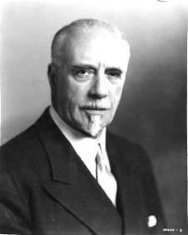
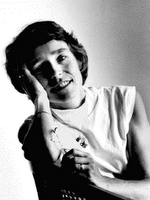
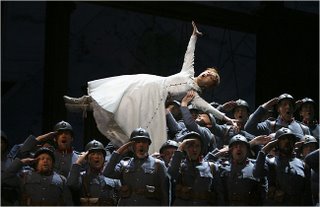
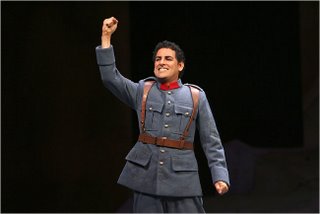
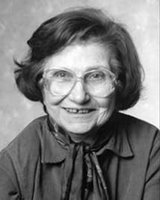



 The Barrons recorded the sounds from the amplification of these circuits and this formed the basis of their working library. They also employed tape manipulation techniques as part of their compositional procedures. The sound qualities of these various amplified tube circuits and the tape manipulations that they underwent formed the musical language that the Barrons created in their studio. Unlike some of the work being done elsewhere, the Barrons' music reveals long phrases, often stated in tape-delayed rhythms, with the stark finesse of the tube circuit timbres. They created a style that was uniquely their own yet married to the technology they were using.
The Barrons recorded the sounds from the amplification of these circuits and this formed the basis of their working library. They also employed tape manipulation techniques as part of their compositional procedures. The sound qualities of these various amplified tube circuits and the tape manipulations that they underwent formed the musical language that the Barrons created in their studio. Unlike some of the work being done elsewhere, the Barrons' music reveals long phrases, often stated in tape-delayed rhythms, with the stark finesse of the tube circuit timbres. They created a style that was uniquely their own yet married to the technology they were using. The music for
The music for 

